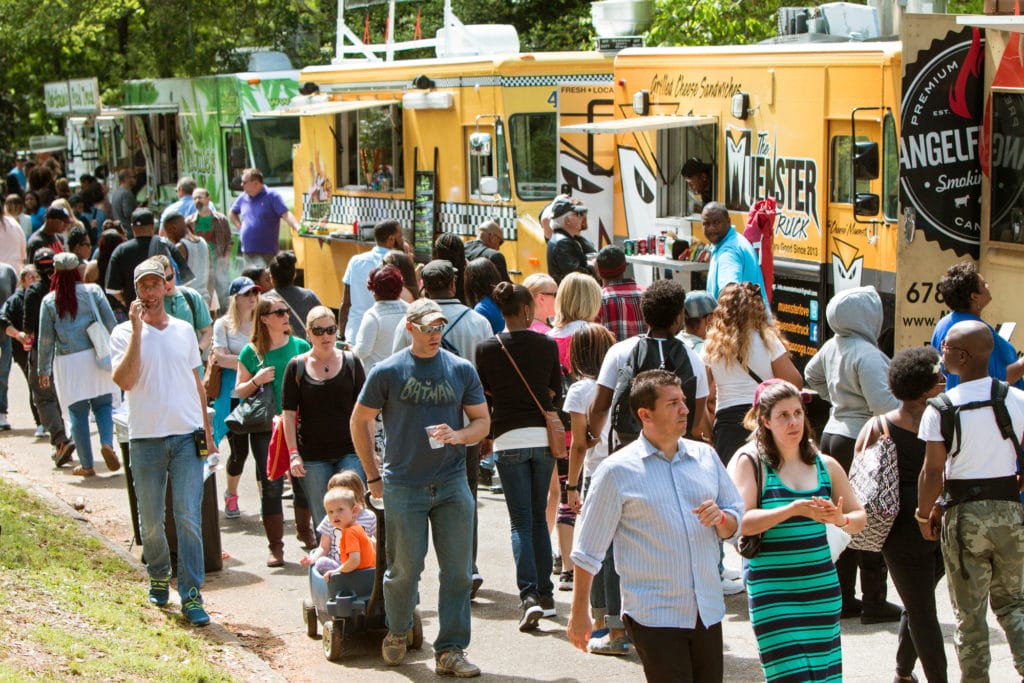The University of Oxford explored the correlation between communal eating and personal well-being, including happiness, friend circles, community connection, and overall life satisfaction. The verdict? The more we dine with others, the happier and more content we feel with our lives — a reflection of how ingrained the act of sharing meals is within our social fabric.
Food is a commonality across cultures and societies, serving as a universal medium for communication and a source of shared experiences. Cooking classes, food festivals, and potlucks are a few examples of how food brings us together. They create spaces for people to connect, learn, and share. These events are not just about the culinary experience but also about the stories and cultures encapsulated in each dish.
Next time you’re enjoying your favorite meal, take a moment to appreciate its role in your life. It’s about togetherness, joy, and the simple yet profound connections that make up our communities. Let’s explore how good food makes our community stronger.
The Effect of Food on Community
Food transcends mere sustenance — it’s a tool for inspiration, innovation, and growth. Community-focused businesses provide an opportunity to support local communities in more ways than one.
Economic Growth
When you develop a community-focused food business, you’re not just investing in an enterprise but also helping fuel your community’s economic prosperity. These businesses create jobs, boost local spending, and invigorate neighborhoods. Consider weddings or special events that use catering companies or food trucks to feed their guests — these are businesses actively contributing to the local economy through their services.
Social Connection
There’s something special about the bond that forms when we share our favorite meals. Local food trucks, catered events, or popups often become community hotspots, places where people gather, exchange stories, and create memories. They foster a sense of belonging, making our communities feel more like extended families. Whether it’s a lively debate over the best pizza popup or a shared tradition of Sunday street food, this connects us on a deeper level.
Representation and Inclusion
You can’t overlook the vital role food businesses play in representation and inclusion. They’re platforms that showcase a community’s rich tapestry of cultures and cuisines. Each dish tells a story, and each food business is a chapter in your community’s narrative.
From the aroma of spices of ethnic cuisine to the unique flavors of vegan food, these provide a sense of identity and recognition. They make communities more inclusive, giving voice and visibility to diverse cultures and culinary traditions.
How To Strengthen the Bond Between Food and Community
It’s all about building a holistic approach that considers the impact on public health, economic growth, social connection, representation, and inclusion. Each business will have a unique way of doing this, but let’s talk about a few strategies that can be universally effective.
Lean Into Local Culture
One of the best ways to strengthen community ties is by embracing and promoting local culture. This could be as simple as sourcing ingredients from local farmers or integrating cultural dishes into your menu. It’s all about creating opportunities to weave unique offerings into your business model so you can actively participate in the community. A few more examples of this are:
- Hosting educational classes and events that showcase local specialties;
- Collaborating with local organizations on community-wide food initiatives;
- Incorporating cultural elements into your logos or menu presentations.
The hope is to create an experience that is unique and inclusive of your community.
Participate in Local Events
It’s easy to get involved with local events. Local farmer’s markets, food festivals, and community fairs are all simple but impactful ways to deepen community connections. Not only do you get to share your food offerings with the public, but you also get to support your neighbors, meet other local business owners, and connect with community members.
You can even host your own events. Whether it’s a block party or a cooking demonstration series, come up with an event that will bring people together around food and culture. Showcase local chefs, artists, and performers to make the event extra special. Not only will this help your business’s visibility in the community, it also creates memories and helps keep traditions alive.
Remember to protect your participation with the necessary insurance like farmers market insurance and catering insurance. These cover potential mishaps and allow you to focus on what you do best — providing delicious food and creating memorable experiences.
Work Toward Accessibility
Let’s face it: not everyone has equal access to food culture due to socio-economic barriers. As a community-focused business, finding ways to make food more accessible is crucial. This could mean:
- Offering affordable meal options;
- Partnering with local organizations to combat food insecurity;
- Hosting cooking workshops to share affordable and nutritious recipes.
Beyond providing sustenance, these initiatives can help tackle systemic inequalities in our food system. Likewise, it’s a way to educate others about the reality of food insecurity in the community. You can touch on topics such as food waste, the need for nutritious meals, and public policies that can help achieve greater access.
Improve Food Literacy
Understanding food — where it comes from, its nutritional value, and how it impacts health — is a fundamental part of strengthening the food-community bond. Food literacy is an essential aspect of self-care and community well-being. When a community understands the importance of nutrition, how to find a trusted source of information, the negative effects of poor diets, and the impact food has on their lives, they become more invested in food culture.
Businesses can help improve food literacy by making health-related information easy to find and understand. Examples include:
- Farmers markets can offer recipe ideas or cooking demonstrations.
- Catering services can list menu nutrition facts, source local ingredients, or offer discounts for healthy options.
- Ghost kitchens can provide educational resources about food safety and sustainability.
The goal is to empower people with the knowledge and skills to make informed food choices — from how it’s grown to what goes into our meals. With a better understanding, we can create an environment where people are more mindful of their consumption and how it affects the community.
As you can see, the bond between food and community is powerful and multifaceted, and there’s so much we can do to strengthen it. By embracing local culture, participating in community events, working towards greater accessibility, and improving food literacy, you can create food businesses that are not just profitable but also profoundly impactful. Because at the end of the day, it’s not just about serving food — it’s about serving the community.


